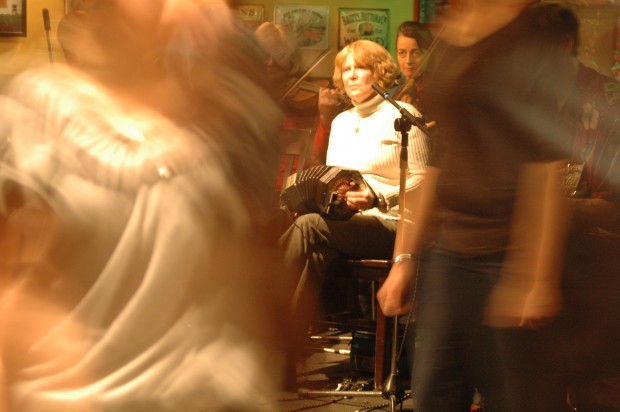My Grandmother was a quiet mystic. I found an essay she wrote called “Creation,” while looking in my files for a Christmas poem I had written. This quote is from that essay:
The crown of this creation is man. There is no part of him which is not created and brought forth out of nothing just like everything else.
— Laura Ann Krebs Ely
A new and deeper realization is dawning in me of the role that Grandma played and plays in my life. Let me explain:
I spent many hours as a child sitting on the green step stool or at the green formica bar in Grandma’s kitchen while Grandma cooked. We talked and were silent together in a kind of authentic flow of time and timelessness. In later years, as I reflected back upon this time, I knew I valued it immensely. I thought it was because it was there with Grandma that my cares floated away; I felt cared for and secure. As my understanding unfolds, I see that those times were times of Presence where the immanent and the transcendent were palpable. Neither of us articulated anything like this. We just knew they were special times (she never even articulated this– it would have been too sentimental for her).
Looking back, I realize that Grandma was “assigned” to me before I was born. She was my spiritual guardian before I was born and she continues to be my spiritual guardian from “the other side.” We are linked together in a definite but, at the same time, unfathomable way. The Great Mystery, within which we are both contained, holds our souls together. Grandma was wise enough to know (as revealed in her essay “Creation”), that we cannot contain this realm within the thinking mind. That said, she also knew that Science is able to illustrate something of it.
This morning as I brought myself to a greater state of stillness in front of the puja (altar) in my meditation room, I became aware that the palpably unique moment is also timeless. It seems to be contradictory, yet it is true. I was aware of what I would awkwardly call a “collapsed moment.” I was here in this unique moment on this day in my meditation room in Anchorage–and–at the same time at Claymont Court (the esoteric studies school that I attended in 1978-79). How can this be? It seems like the gateway to the Great Mystery. It seems like a threshold to Reality. What is it that can simultaneously occupy two disparate moments?
I was led to read about the Great Void in the book by Swami Shantananda entitled: The Splendor of Recognition (An Exploration of the Pratyabhijna-hrdayam, a Text on the Ancient Science of the Soul).
The sacred texts of Saivism, substantiated by the experience of yogis, state that the supreme Reality exists beyond the creation while manifesting simultaneously as creation. Reality is beyond form and also it is form; it is unchanging and at the same time it is constantly changing; it is eternal and it is absolutely fleeting. In other words, Reality is simultaneously transcendent and immanent; it is visvottirna, that which is the universe, and at the same time visvamaya, that which contains the universe. Taken together, these two inseparable aspects comprise the totality and fullness of Reality. The difference between these two seemingly contradictory descriptions is a matter of perspective. It all depends on how you look at it.
From our ordinary point of view, Citi (… Citi is that which is endowed with the power to know and perceive; it is that which makes other things appear. And how does Citi do this? Citi “makes” things appear in the sense that an object can only appear– or exist–in our experience when it is held in the field of our awareness. (p. 25)) is immanent, first of all; Citi takes shape as the entire universe, a cacaphony of sound and form. But from the transcendental perspective, Citi has neither form nor content, only an unfathomable boundless depth, which the sages of Saivism call mahasunya, the Great Void. The term “void” can be confusing. This is not to say that the Great Void does not exist; mahasunya exists. It is void, or null, only in the sense that there is no subject to perceive objects, for in the Great Void all manifestation is fused with the light of Consciousness.***Here, one experiences neither happiness nor suffering, knowledge nor ignorance, but a thought-free, steady, peaceful state.
***… a transcendant state in which the subject has merged with the object” (Mark S.G. Dyczkowski, The Doctrine of Vibration (1987), pp 118-22.)
***********
The essential nature of everything is worthy of being known. It is said that the mind is knowledge (because knowledge is obtained through the mind). One should consider knowledge to be identical with the object of knowledge. There is no way other than that (to liberation). — Sri Guru Gita, V. 100
As I go forward to Assignment 3, I see that it is a continuation of the first two assignments. It will address time and eternity as existing simultaneously. Pretty heady-sounding when articulated. The key is to try to remain in the Witness state as I seek to become one with the object of perception as I engage in the artistic process.
